
JOECO BBR1 BLACK BOX RECORDER

This unit will happily record all your gigs, even the disastrous ones!
Review: Gareth Stuckey
I love live recording, and I’ve tried most of the ways people do it. In my ‘Masters’ cupboard I have most of the careers of Machine Gun Fellatio and George documented on all kinds of formats. Back in those days I was tracking to MiniDisc. I recorded My X-Girlfriend’s Boyfriend Has Got a Band for MGF’s platinum selling Paging Mr Strike live to MiniDisc at the Hopetoun in Sydney, before George bought a CD burner and I moved over to that format. Next came the Tascam DA38s, and finally the pinnacle – my Tascam MX2424.
I bought the first of these machines when they were the new cool thing. It’s served me well for 10 years and I’ve recorded countless shows and broadcasts with it: Make Poverty History, Thirsty Merc for Austereo and Nova, DVD releases of George, Dave McCormack and Lyrics Born, and generally punished it in every way possible (if airline baggage handling isn’t punishment I don’t know what is). Unfortunately they’re getting to the point now where they’re just too far behind current technology. Even though they might work well and sound great, who has time to deal with SCSI discs and an unsupported GUI?
This is why I’m so excited about the new Black Box Recorder: it’s current technology, it’s small and light – as a portable rig should be – and the hard-drive is external to the unit, making the need to transfer files out of it a thing of the past.
NO BULL
The ‘Joe’ in JoeCo is none other than Joe Bull of Sadie fame – so from the outset there’s an implicit understanding that the Black Box Recorder should at least be half decent. And so it is.
The Black Box Recorder is aimed directly at the niche market of live recording. And having spent so much time doing just that, I’m well aware just how niche this market really is, and how specific its needs are. Sure, other manufacturers have units that can be used for live recording, but this is the only device I’ve seen that’s specifically designed for it.
WHAT IS IT EXACTLY?
The BlackBox Recorder is a 24-track, 24-bit/96k recorder. To be clear – this unit is designed as a live recording unit only. It’s not a standard multitrack recorder, nor is it a DAW in any shape or form. There’s no overdubbing capacity, you can’t punch in and there are certainly no onboard editing facilities. The unit just records tracks – from beginning to end – so you can import them into you DAW of choice afterwards and do with them what you will. The unit intentionally trades away complexity for simplicity – rare in this day and age – and with that trade-off comes a massive reduction in physical size. It’s 1RU only, and weighs just over a kilogram – extraordinary. There are no bells and whistles so consequently it’s rock solid – I left it recording overnight on more than one occasion, and came back to a full disc with no issues each time. I even pulled the power on it a couple of hours in on one occasion, just to see how it behaved – flawless recording up to the moment I pulled the cord. Tick box.
The unit I’ve had with me on the road is the balanced version, the rear panel of which is comprised of six D-sub connections: three for the inputs, three for the outputs. There are other versions available too, offering digital inputs (in a variety of formats) and an unbalanced version that ships with looms so you can use the insert points on your console to record feeds from your FOH pre-amps. This allows for things like clubs offering an in-house live recording service the ability to have the setup patched in permanently, or for bands to perform a ‘virtual soundcheck’. The idea of this being: record a short soundcheck, play it back off the machine through the insert return and continue tweaking to your heart’s content after the band’s left the room.
FAT 32 DRIVES
The BBR1 runs with FAT 32 formatted drives for the simple reason that it’s the only format that’s easily read by all computer systems. Drives connected to the Black Box will almost certainly be passed around to multiple users at some point so it’s vital everyone can read the data. The unit records BWAV files direct to your disc. You can choose the sample rate and bit depth, and then it just gets to work. One very cool point to note, given that live recordings are often lengthy, and DAWs like ProTools for example have a maximum file size, the Black Box is smart enough to keep every file under this maximum. Even if you recorded all day, the unit just does some fancy maths and keeps starting new files when it needs to. You wouldn’t even know it was doing it, but when you later plug the drive into your ’Tools rig – it sees all your complete files without any problems. Smart.
One thing I do find a little tedious about the JoeCo unit is the transport control. First there’s the illuminated data wheel – which doesn’t move, but rather responds to touch… just like your iPod! This sits beside two rows of ‘buttons’ and transport controls. All of these are touch-sensitive – the idea being that you simply have to place your finger on them to operate the unit. The upper row carries the Back, Mark, Loop and Menu/OK functions, while the lower row features the main Play, Stop and Record layout. (Fast Forward and Rewind are accessed by holding down the Stop button and ‘turning’ the data wheel in the appropriate direction.) This all sounds great on paper and perhaps works with an iPod when you’re holding it in your hand, but rack-mounted at a show (or for that matter in the studio) with sweaty fingers – they’re pretty hard to use. More often than not I found it took several attempts and a few incorrect commands to achieve my initial intention. I can see what the designer was aiming for here – the setup is modern, easy to use and familiar – but in a rack-mounted situation it’s difficult to use. A simple stop/ play/ record button set up – that you could confidently press (in a hurry) would have been much more appropriate for a unit that’s meant to be used in a live environment.
SIZE DOES MATTER
Taking the BBR1 out on an event and running it as the redundant backup for the MX machine, it was almost comical to see the two sitting next to each other – 4RU and 25kgs vs. 1RU and less than 1kg – knowing that they were doing the same job. The rack space saving alone on the BBR1 makes the JoeCo unit invaluable, especially in cramped confines like broadcast trucks etc. There are very few differences in the units as far as functionality is concerned; the main standouts being that the Black Box only has a very simple (an undefined in terms of calibration marks) metering system: Green/Yellow/Red. More significantly, the BBR1 boasts a built-in headphone amp. With this facility you can monitor individual pairs of tracks – odd in your left ear, even in your right – which is slightly irritating, or a ‘rough mix’ of all the inputs dumped out to the headphones. While this is not the ideal monitoring situation, it’s a big step up from the other recorders on the market… that offer nothing at all! Even if you had your full-blown ProTools rig out at a show, you’d still need to add some sort of monitoring system (ProTools HD interfaces don’t have headphone outputs). Another thoughtful feature – the headphone output is routed through an automatic gain control so quiet signals can be heard during a concert. This does not affect the recording at all, mind you, only the monitoring level, and this is adjustable in the Setup menu. I did find it a little odd, however, that the headphone output was located on the <<rear>>. While at first this seems almost bizarre, it may save your skin one day. One of the easiest things to do at FOH is trip on a cable and having these connections in the back makes this scenario unlikely, even if it is a tad annoying.
AFTER THE SHOW
Ironically, after the show is where the Black Box Recorder really shines. I used to spend full days transferring files from my MX machines. With the Black Box Recorder I now simply connect the recording drive to a ProTools rig (you can use any system) and import the audio straight into a new session without a hitch. 10 minutes later the files are copied and I’m away. Let’s face it, studio time is money, and not having systems and studios tied up doing file transfers is a big advantage. Even better, if a client has only contracted you to do a recording (i.e., not deliver a mix) you can simply hand them the drive at the end of the show. How easy is that?
The bottom line with live recorders is that they need to work! And the BBR1 does just that. It’s fast to set up, easy to get recording (and keep recording), it sounds great and files are dead-easy to transfer after the fact. With the exception of the touch buttons – and even these may be something you’d eventually get used to – the Black Box ticks all the boxes. Will I be looking at updating my live recording racks with these machines in 2011? You betcha.




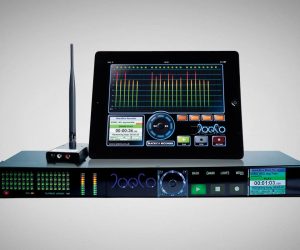


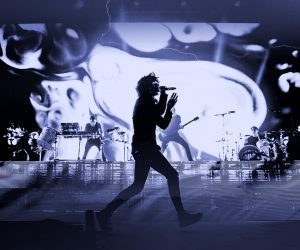
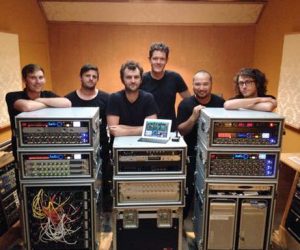
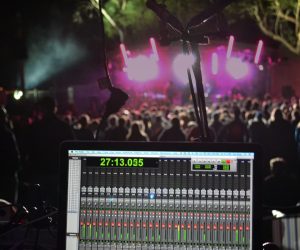


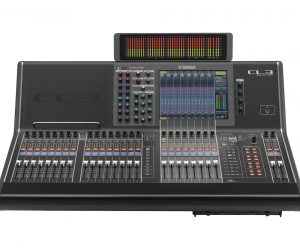



RESPONSES